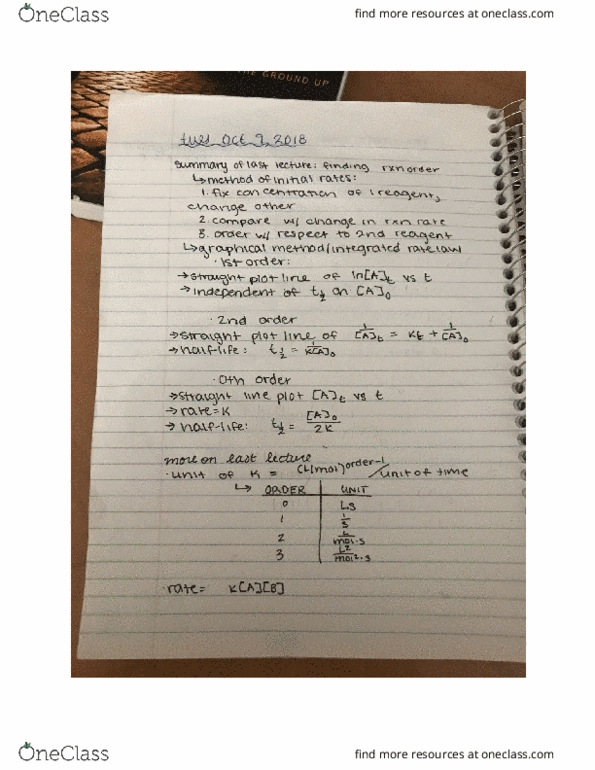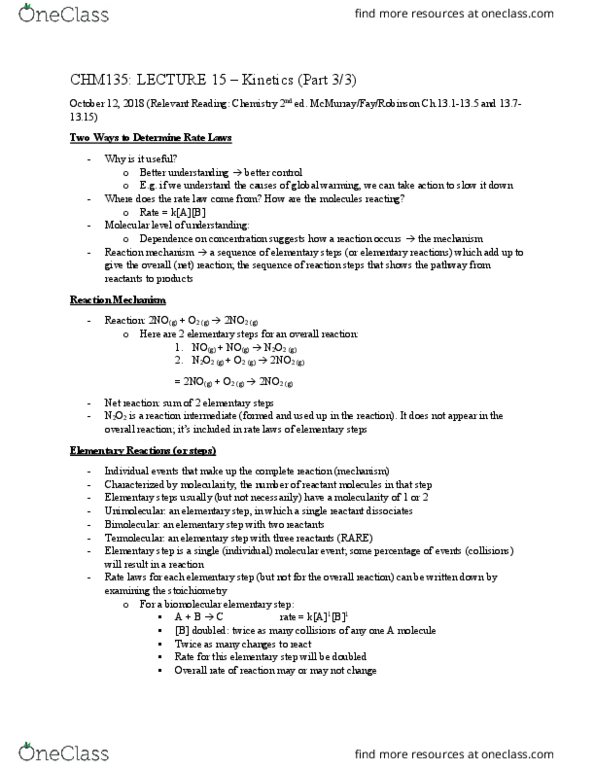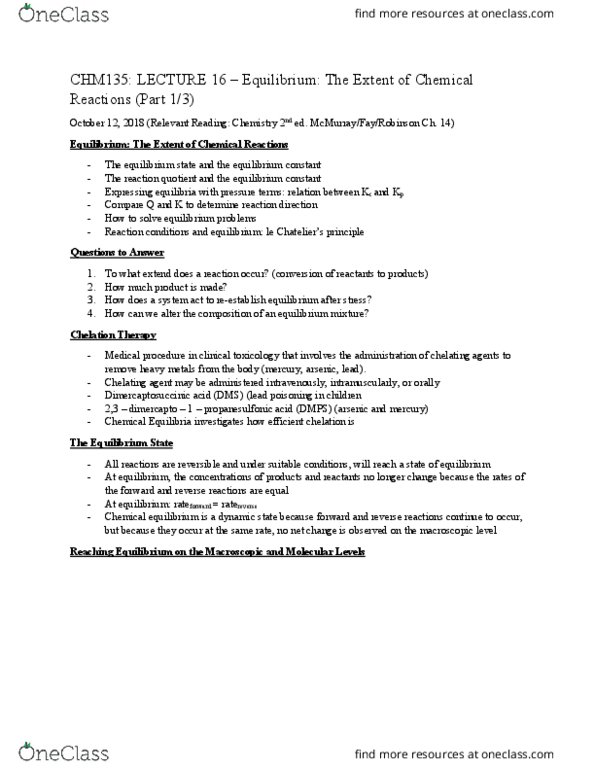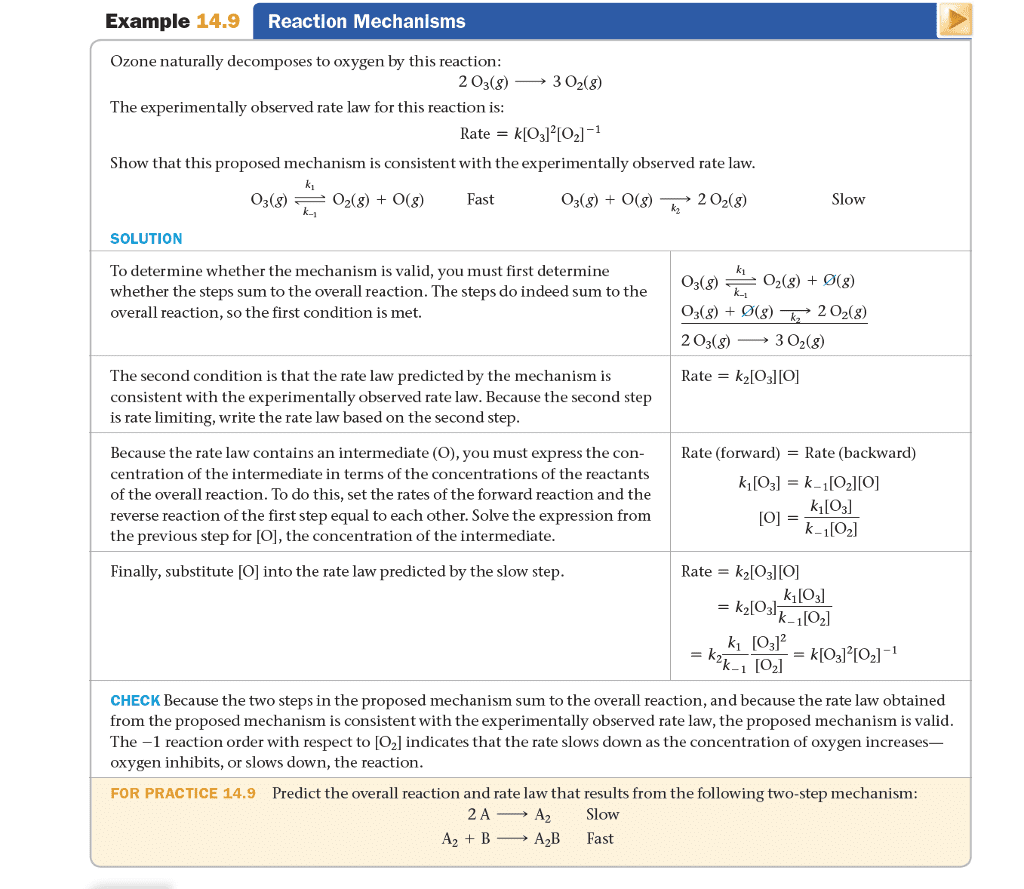CHM135H1 Lecture Notes - Lecture 16: Reaction Step, Elementary Reaction, Rate Equation
CHM135H1 verified notes
16/38View all
Document Summary
October 12, 2018 (relevant reading: chemistry 2nd ed. Why is it useful: better understanding better control, e. g. if we understand the causes of global warming, we can take action to slow it down. How are the molecules reacting: rate = k[a][b] Molecular level of understanding: dependence on concentration suggests how a reaction occurs the mechanism. Reaction mechanism a sequence of elementary steps (or elementary reactions) which add up to give the overall (net) reaction; the sequence of reaction steps that shows the pathway from reactants to products. Reaction: 2no(g) + o2 (g) 2no2 (g: here are 2 elementary steps for an overall reaction, no(g) + no(g) n2o2 (g, n2o2 (g) + o2 (g) 2no2 (g) = 2no(g) + o2 (g) 2no2 (g) Net reaction: sum of 2 elementary steps. N2o2 is a reaction intermediate (formed and used up in the reaction). It does not appear in the overall reaction; it"s included in rate laws of elementary steps.





